Disclosure: This article contains affiliate links. We may earn a commission from purchases at no extra cost to you, which helps our travel content.
The first time I gazed upon Manhattan's skyline from the Staten Island Ferry, I was struck not just by the architectural marvel before me, but by the remarkable geological foundation supporting it all. As someone who has spent decades studying the earth's formations, I find New York City to be a fascinating juxtaposition of natural and human engineering. The city sits atop some of the oldest metamorphic rock in North America – Manhattan schist – dating back nearly 450 million years. This ancient foundation literally grounds one of humanity's most forward-looking metropolises. Whether you're a first-time visitor drawn by Broadway's lights, Central Park's serenity, or simply the city's incomparable energy, understanding both the cultural landscape and the physical one beneath your feet offers a richer experience of this remarkable urban ecosystem.
Where to Stay: Neighborhood Guide for First-Timers
Selecting the right neighborhood in New York City can significantly shape your experience. For first-time visitors, I recommend establishing your base in either Midtown Manhattan or the Upper West Side.
Midtown offers unparalleled convenience – you'll find yourself within walking distance of iconic attractions like Times Square, Rockefeller Center, and the Empire State Building. The energy here is quintessentially New York, though it comes with higher prices and larger crowds. During my first extended stay researching Manhattan's unique geology, I chose a modest hotel near Bryant Park, which provided an ideal central location with the bonus of a lovely green space right outside.
The Upper West Side offers a more residential feel while maintaining excellent subway access. This neighborhood borders Central Park's western edge, providing easy access to this geological marvel – an 843-acre oasis where Manhattan schist outcroppings reveal the island's ancient foundation. The American Museum of Natural History, with its exceptional Earth Sciences collection, is another neighborhood highlight that I visit during every stay.
For budget-conscious travelers who don't mind a short subway ride, consider Long Island City in Queens. Just one stop from Midtown on several subway lines, this rapidly developing area offers spectacular Manhattan views and significantly lower accommodation prices. I discovered this neighborhood gem during a conference at CUNY and have returned several times.
Regardless of neighborhood, I recommend using a reliable travel noise machine for better sleep. New York truly never sleeps, and ambient city noise can be challenging for visitors unaccustomed to urban soundscapes.
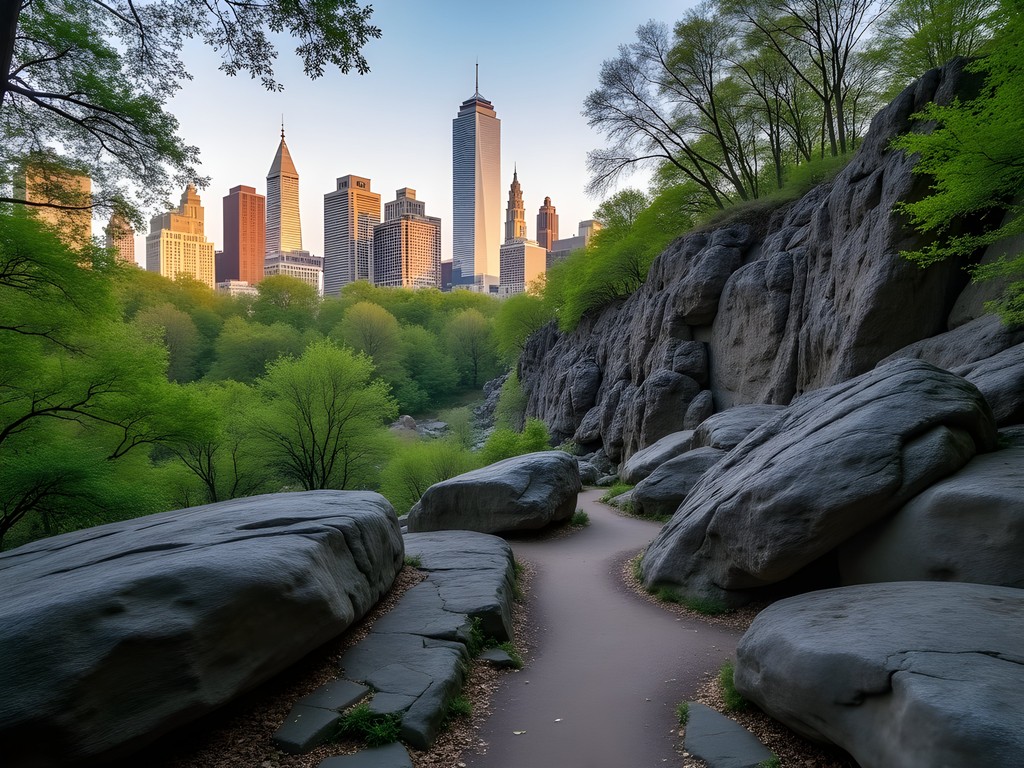
💡 Pro Tips
- Book accommodations at least 3 months in advance for the best rates, especially during spring
- Consider hotels near subway stations with multiple lines for maximum mobility
- Request a high floor room for better views and less street noise
Navigating the Concrete Jungle: Transportation Tips
New York's public transportation system may initially seem daunting, but it's actually one of the most efficient ways to experience the city. The subway system, while showing its age in places, remains a marvel of engineering that transports over 5 million riders daily through tunnels carved through the city's ancient bedrock.
During my first visit decades ago, I made the rookie mistake of relying on taxis, which quickly depleted my travel budget. Now I exclusively use the subway system, which operates 24/7 and can take you virtually anywhere in the five boroughs. Purchase a 7-day unlimited MetroCard ($33) if you plan to make more than 12 trips during your week – it will quickly pay for itself.
For navigating the subway system, I rely on the NYC Subway app which provides real-time updates about service changes and delays. This has saved me countless hours of frustration, especially during weekend construction work which is common throughout the system.
Walking remains my preferred method for exploring Manhattan neighborhoods. The city's grid system makes navigation surprisingly intuitive once you understand that numbered streets run east-west (increasing as you go north) while avenues run north-south. Remember that each standard block equals approximately 1/20th of a mile – useful for estimating walking distances.
For traversing longer distances or when fatigue sets in, Citibike offers an excellent bike-sharing program with stations throughout Manhattan and parts of Brooklyn. Just be cautious if you're not accustomed to urban cycling – New York traffic requires constant vigilance.
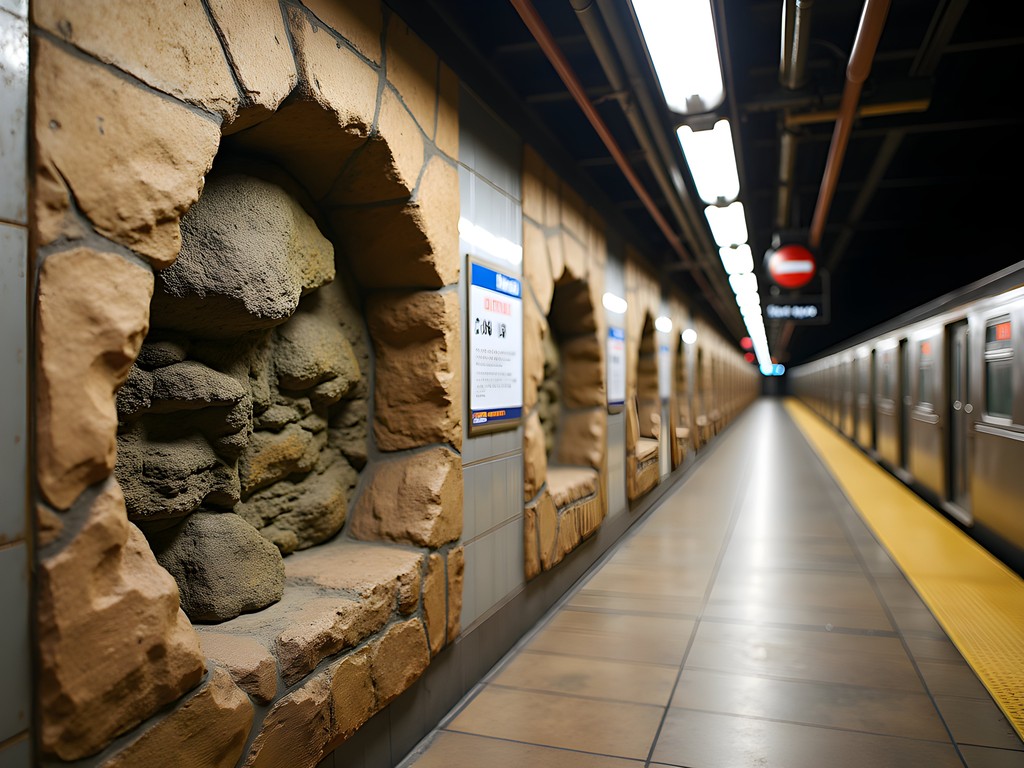
💡 Pro Tips
- Stand clear of subway doors and move to the center of the car during rush hours
- Verify your subway train's destination before boarding as express trains skip many local stops
- When using Google Maps, download offline maps of Manhattan to conserve battery and data
Essential Cultural Experiences: Beyond the Tourist Traps
While iconic attractions like the Statue of Liberty and Empire State Building certainly merit visits, New York's true cultural depth reveals itself through experiences that connect its human history with its physical landscape.
Begin with the American Museum of Natural History on the Upper West Side, where the Earth and Planetary Sciences halls showcase remarkable specimens that tell the geological story of New York and beyond. The Hayden Planetarium's space shows offer perspective on our cosmic placement – something I find humbling after decades studying our planet's formations. As a professional courtesy, I typically receive behind-the-scenes access to research collections, but public exhibits remain world-class.
For an experience blending culture and geology, visit the Cathedral of St. John the Divine, the world's largest Anglican cathedral. Beyond its spiritual significance, the cathedral incorporates diverse stone types from around the world in its construction. The guided vertical tour (advance reservations required) provides access to the roof, offering both architectural insights and spectacular views.
New York's performing arts scene is unmatched. While Broadway shows are justifiably famous, consider the Lincoln Center for orchestral performances or the Public Theater for innovative productions. As an avid soccer enthusiast, I've found New York's vibrant soccer culture at bars like Smithfield Hall in Chelsea, where international matches draw passionate crowds.
For stargazing enthusiasts like myself, the High Line offers occasional astronomy nights with telescopes set up along this elevated park built on a former railway line. While New York's light pollution limits deep sky observation, the juxtaposition of celestial and city lights creates a uniquely urban astronomy experience.
Before visiting major museums, I recommend investing in a good guidebook to help prioritize exhibits based on your interests. Most museums are vast enough to require strategic planning.

💡 Pro Tips
- Visit major museums during weekday afternoons to avoid weekend crowds
- Check TimeOut New York's website for free cultural events happening during your stay
- Many museums offer pay-what-you-wish hours on specific days – research before your visit
Culinary Adventures: From Food Carts to Fine Dining
New York's culinary landscape reflects its status as a global crossroads, with flavors from virtually every corner of the world represented across its five boroughs. Having traveled extensively, I can confidently say that few cities match New York's breadth and quality of dining options.
For breakfast, embrace New York's bagel culture. As someone who appreciates the science behind food, I find the city's bagels fascinating – it's widely believed that the mineral composition in New York's water supply contributes to their distinctive texture and flavor. My personal favorite is Absolute Bagels on the Upper West Side, where I often grab a toasted everything bagel with scallion cream cheese before heading to Central Park.
Lunch presents an opportunity to experience the city's remarkable diversity through food halls like Chelsea Market or Essex Market. These venues allow you to sample multiple cuisines in one location – perfect for travelers with varying preferences. For a quintessential New York experience, visit Katz's Delicatessen on the Lower East Side, where the pastrami sandwich represents a cultural institution as much as a meal.
Dinner options span from Michelin-starred establishments to humble neighborhood gems. In my experience, some of the most memorable meals come from the city's ethnic enclaves: Sunset Park for authentic Chinese, Jackson Heights for Indian and Nepali cuisine, or Arthur Avenue in the Bronx for Italian that rivals anything I've had in Rome.
Don't overlook street food – the halal carts, particularly the famous one at 53rd and 6th Avenue, offer remarkable value. During long research days, I often rely on these vendors for quick, flavorful meals.
For coffee enthusiasts like myself, a quality travel mug is essential for enjoying New York's excellent coffee scene while exploring. The city's independent cafés often source beans from local roasters, creating distinctive flavor profiles worth experiencing.
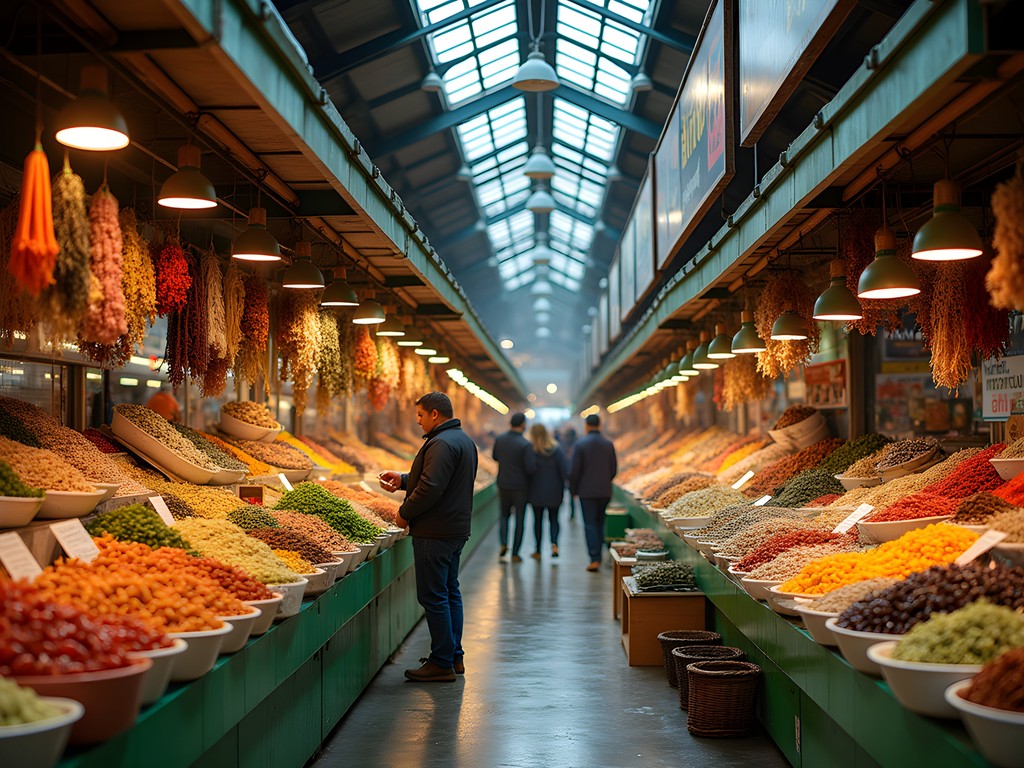
💡 Pro Tips
- Make dinner reservations 2-3 weeks in advance for popular restaurants
- Look for the 'A' grade health department rating displayed in restaurant windows
- Many high-end restaurants offer more affordable lunch prix fixe menus with similar quality
Geological Wonders in an Urban Setting
While most visitors come to New York for its cultural attractions, the city offers fascinating geological features that tell a story spanning hundreds of millions of years. As a geologist, these elements provide me with a deeper connection to this remarkable urban environment.
Central Park presents the most accessible showcase of Manhattan's geological foundation. The park's designers, Frederick Law Olmsted and Calvert Vaux, brilliantly incorporated existing rock outcroppings into their landscape plan rather than removing them. Wander through the Ramble to discover exposed Manhattan schist, a metamorphic rock dating back to the Paleozoic era. These formations reveal evidence of intense pressure and heat from ancient mountain-building events that shaped the region long before humans arrived.
For a comprehensive understanding of the area's geological history, the Geology Tour at Central Park (offered monthly by the Urban Park Rangers) provides expert interpretation of these features. During spring, I particularly enjoy photographing the contrast between ancient stone and fresh foliage using my camera stabilizer for smooth video captures of these juxtapositions.
Inwood Hill Park at Manhattan's northern tip contains the island's last natural forest and dramatic outcroppings of marble and schist. Here, away from the city's bustle, you can observe evidence of glacial activity from the last ice age, including striations and erratics (transported boulders).
Even the built environment reflects geological influence. Early skyscrapers cluster in Midtown and the Financial District precisely because these areas feature bedrock close to the surface, providing stable foundations. The areas between – where bedrock lies deeper beneath glacial till – developed with lower structures until modern engineering solutions emerged.
For those interested in building materials, St. Patrick's Cathedral showcases Tuckahoe marble quarried from nearby Westchester County, while the Empire State Building incorporates limestone containing visible fossils – a reminder that even our most iconic structures consist of materials with their own ancient histories.
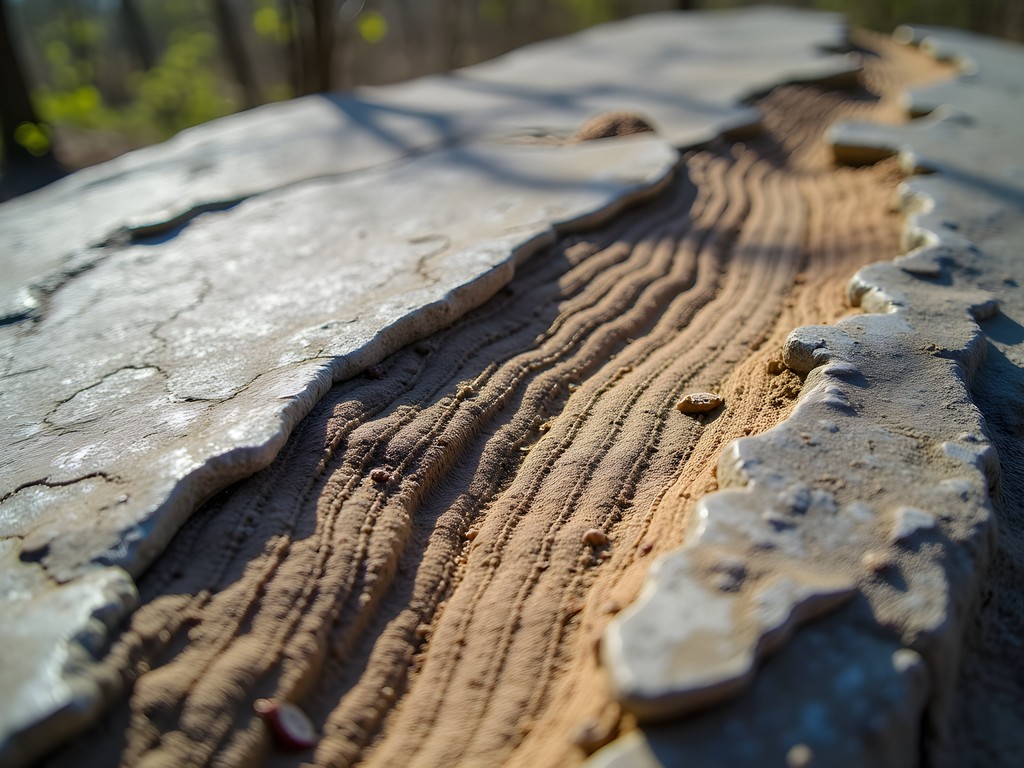
💡 Pro Tips
- Download the Central Park Conservancy app for self-guided geology walks
- Visit the American Museum of Natural History's Hall of Planet Earth for context before exploring outdoor sites
- Bring a small magnifying glass to examine rock textures and mineral compositions
Final Thoughts
New York City exists in multiple dimensions – as a cultural epicenter, historical crossroads, and remarkably, as a geological narrative written in stone beneath our feet. As you explore this magnificent city for the first time, I encourage you to experience it with both the wide-eyed wonder of a tourist and the analytical curiosity of a scientist. Notice how neighborhoods change with the underlying topography, how the city's growth patterns followed geological constraints, and how human ingenuity has both adapted to and transformed the natural landscape. New York rewards those who look beyond the obvious, who seek connections between human stories and the ancient foundation supporting them. Whether you're standing atop the Empire State Building or examining schist outcroppings in Central Park, remember that you're experiencing just one moment in an ongoing story millions of years in the making. Safe travels, and may your first New York experience be as layered and fascinating as the city itself.
✨ Key Takeaways
- Stay in Midtown or Upper West Side for convenient first-time access to major attractions
- Use the subway system with a 7-day unlimited MetroCard for cost-effective transportation
- Experience both iconic landmarks and lesser-known geological features for a more complete understanding
- Explore neighborhood food scenes beyond tourist areas for authentic culinary experiences
📋 Practical Information
Best Time to Visit
April-June (spring)
Budget Estimate
$150-250 per day excluding accommodations
Recommended Duration
7 days minimum
Difficulty Level
Easy


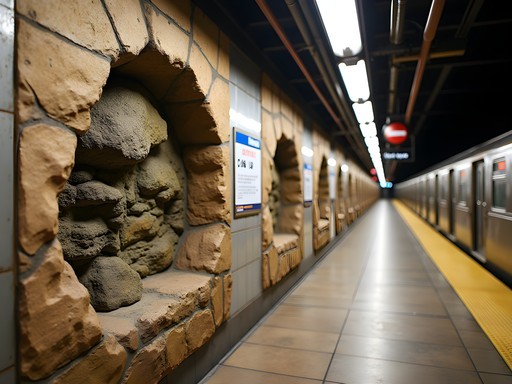
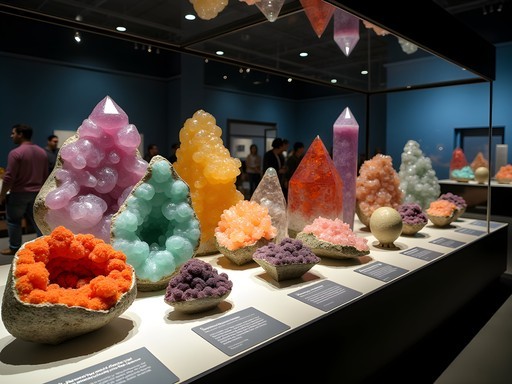
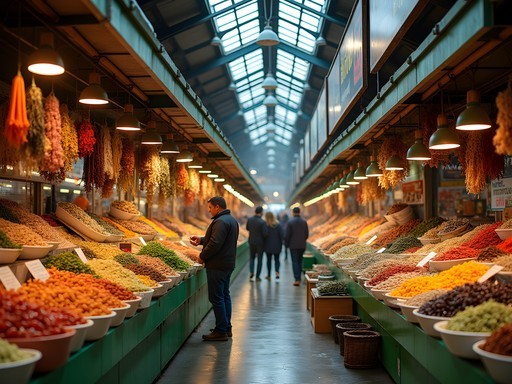
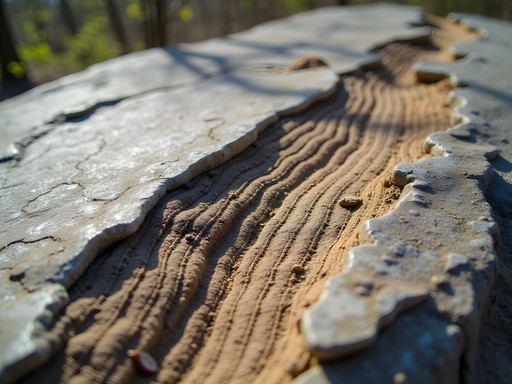


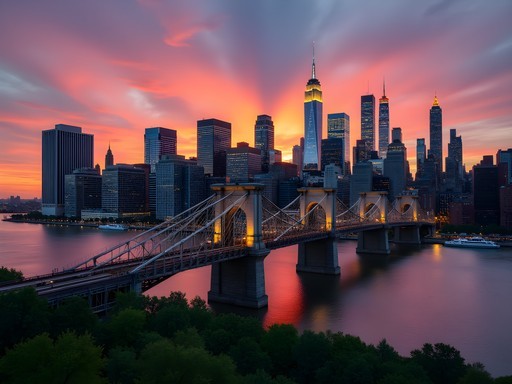


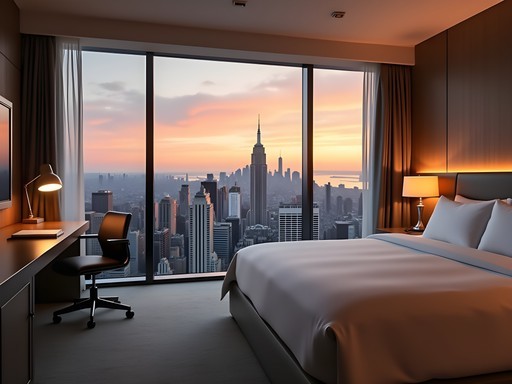
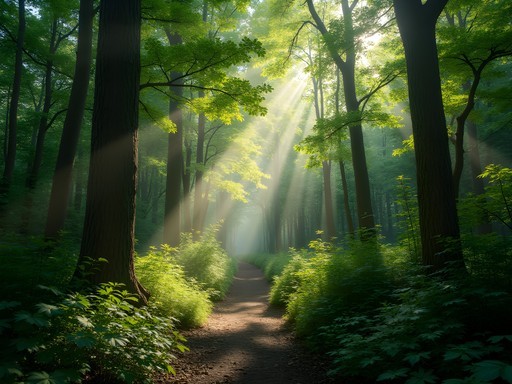

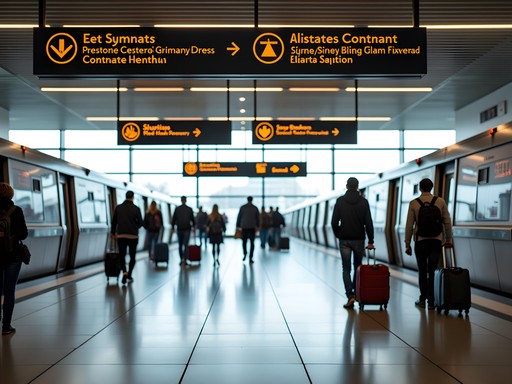

Comments
Stephanie Romano
Robert, this guide brought back so many memories of our family trip last year! One thing I'd add for families visiting NYC - the playgrounds in Central Park are amazing and free. My kids especially loved the Ancient Playground near the Met and Heckscher Playground. It gave them a chance to burn off energy between museum visits! Also, for anyone traveling with children, I found that most NYC restaurants are surprisingly accommodating despite their reputation. Just avoid peak dinner hours (7-8pm) and you'll have a much smoother experience.
Mason Sullivan
Robert, your geological angle at the beginning caught my attention right away - such a unique perspective on NYC! As someone who's visited on a tight budget multiple times, I appreciate your mix of splurge-worthy experiences and money-saving tips. For fellow budget travelers: the Staten Island Ferry tip is golden, but also check out Governors Island in summer (cheap ferry, amazing views, free bikes on mornings), and don't miss the 'pay what you wish' nights at major museums (just check their websites). My favorite hack: grab breakfast at a local bodega, picnic lunch from grocery stores, then splurge on just one nice dinner. NYC doesn't have to break the bank if you plan smart!
AdventureAwaits
Great post! How many days would you recommend for a first timer to really see the essentials?
Robert Garcia
I'd say minimum 5 days to hit the major highlights without rushing, but 7 days would be ideal to really get a feel for different neighborhoods and have some breathing room in your itinerary. NYC can be intense!
adventurephotographer
Planning my first trip to NYC and wondering if it's safe to explore Central Park in the evening? Also, what camera gear do you recommend for capturing those iconic skyline shots?
smartrider
I wouldn't recommend deep Central Park exploration after dark, especially alone. Stick to well-lit paths near the edges if you go evening time. For skyline shots, I got amazing photos from Brooklyn Bridge Park and Top of the Rock (better than Empire State imo). I used my travel tripod for night shots - totally worth carrying around!
adventurephotographer
Thanks for the safety tip and photo spots! Will check out that tripod recommendation.
adventureseeker
Just got back from NYC and wish I'd seen this sooner! Your transportation tips are gold - we figured out the subway after a day but that MetroCard vs OMNY comparison would've been helpful! One thing I'd add for first-timers: don't try to do everything! We exhausted ourselves the first two days trying to hit all the major spots. The best day was when we just picked one neighborhood (we chose Greenwich Village) and just wandered around without an agenda. Found the best pizza place and a tiny jazz club that became the highlight of our trip!
Claire Hawkins
That's such great advice! When we took our kids last summer, we limited ourselves to max 2 big attractions per day and spent the rest just exploring. Made the whole experience so much more enjoyable!
TravelBug_Jane
Love the section on food carts! Those halal carts are LIFE CHANGING. The Lamb over rice... omg.
summerpro1768
Seriously! The white sauce is legendary. I still dream about it.
redking
Is it really worth staying in Manhattan? The prices seem crazy compared to Brooklyn or Queens. Anyone have experience staying outside Manhattan?
waveguy
We stayed in Williamsburg (Brooklyn) and loved it! Cool vibe, great restaurants, and just a quick subway ride to Manhattan. Saved a ton of money too.
Stephanie Romano
With kids, we found staying in Manhattan worth the extra cost just for convenience - less time commuting meant more time exploring. But for my solo trips, I've stayed in Astoria (Queens) and it was fantastic! Great Greek food scene and easy subway access.
moonbuddy3953
Going to NYC next month for the first time! Bookmarking this guide!!
oceanwanderer
Robert, this is exactly the guide I wish I had before my first NYC trip last year! Your neighborhood breakdown is spot-on. We ended up staying in Chelsea and it was perfect - central enough to walk to many places but not as chaotic as Times Square (which we quickly learned is where NOT to stay). The Staten Island Ferry tip is gold - best free view of the skyline and Statue of Liberty. I'd add that the High Line at sunset is magical, especially in fall when we went.
springninja
Chelsea is such a good recommendation! We stayed there too and loved all the galleries and food options. Plus the High Line access was perfect!
oceanwanderer
Right? And so much less touristy than I expected. We found this amazing little bakery on 9th Ave that became our morning ritual.
Claire Hawkins
Robert, this guide brought back so many memories of my first trip to NYC with my family last year! We followed a similar path through the neighborhoods. One thing I'd add for families - the Staten Island Ferry at sunset is magical and FREE, which was perfect for our budget. My kids were mesmerized by the skyline views. We also found that staying in the Upper West Side was perfect for families - quieter streets and proximity to Central Park for when the little ones needed to burn off energy. I wish I'd had your geological insights though - what a fascinating lens to view the city through!
Robert Garcia
Thanks Claire! The Staten Island Ferry is indeed one of the best free activities in NYC. I'm fascinated by how the city's geology shaped its development - those bedrock formations literally determined where skyscrapers could be built! Upper West Side is definitely family-friendly gold.
NYCexplorer22
The Staten Island Ferry tip is spot on! We did this with our travel tripod and got amazing sunset skyline shots. Definitely a highlight of our trip!
Venture X
Premium card with 2X miles, $300 travel credit, Priority Pass